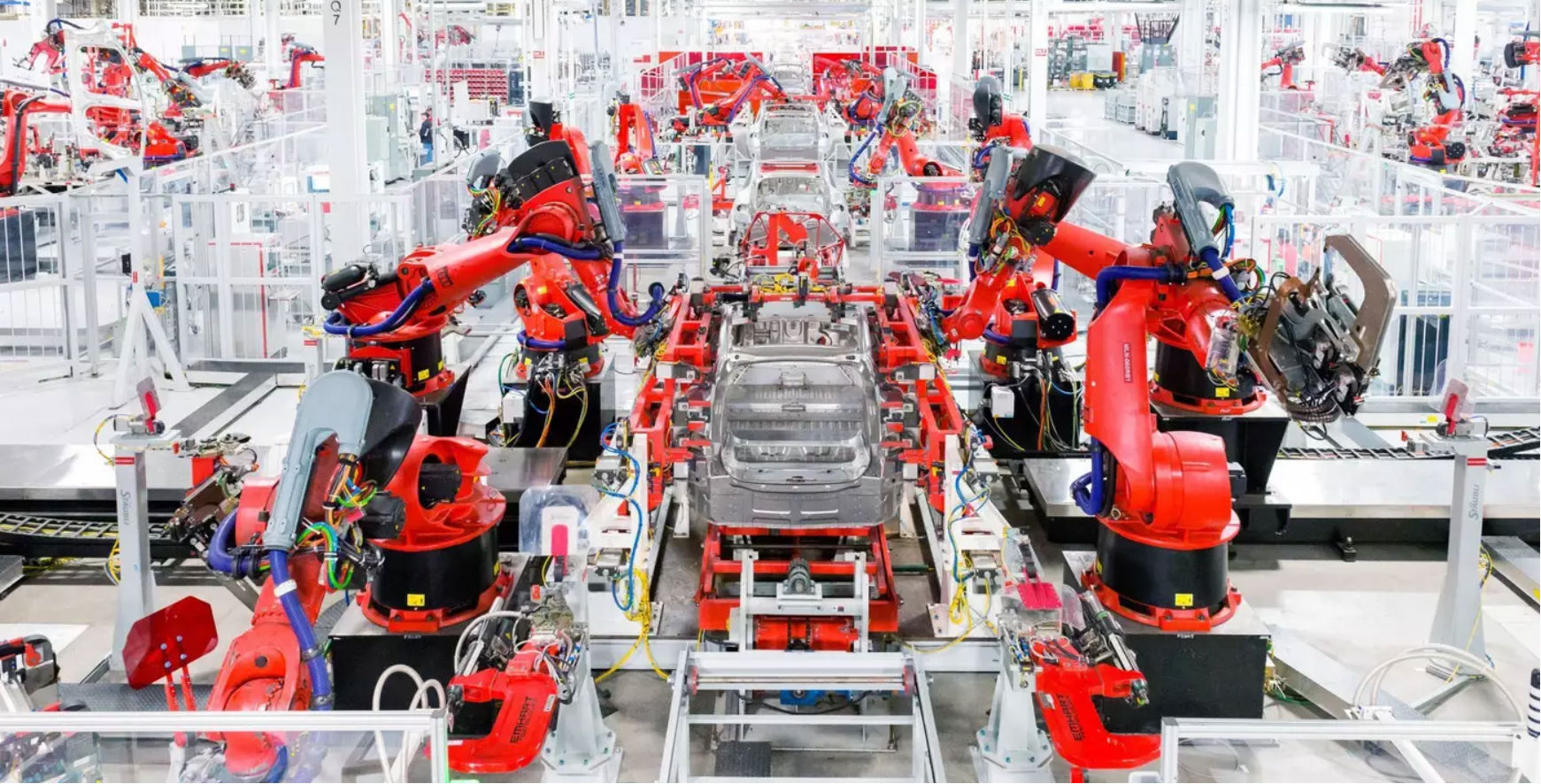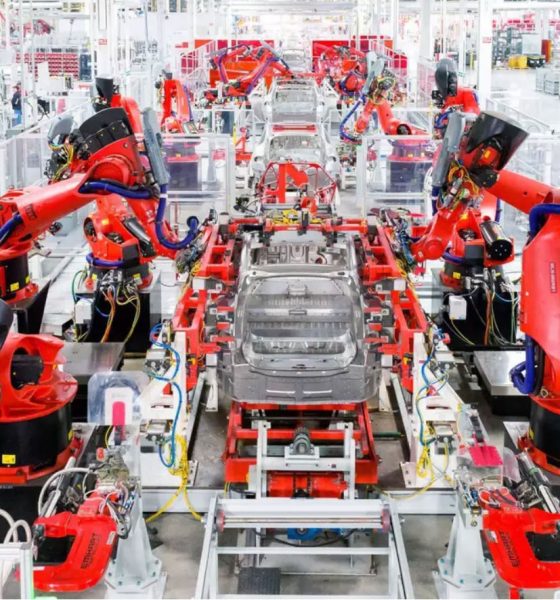

Investor's Corner
Tesla’s Q3 results and Wall St’s reaction: When record deliveries is bad news
Tesla’s (NASDAQ:TSLA) third-quarter results set new production and vehicle delivery records for the electric car maker. With a total of 96,155 electric cars produced and about 97,000 delivered between July and September, as well as an update that revealed that the company achieved record net orders in Q3, Tesla’s results were objectively impressive.
Yet, the market’s reaction to Tesla’s Q3 results was unforgiving. TSLA stock dipped over 4% in after-hours trading following the company’s release of its record third-quarter results. Bearish outlooks were shared by analysts covering the company once more, and questions about the demand for Tesla’s vehicles were rekindled.
A key driver of this negative narrative was Tesla’s reported miss of Wall Street’s expectations, as analysts polled by FactSet had an average estimate of 99,000 deliveries for Q3 2019. It should be noted that this estimate did not represent the latest consensus numbers from the greater number of analysts covering the company prior to the release of the Q3 production and delivery results.
FactSet usually utilizes about 10-12 analyst estimates to create a consensus, but over 20 analysts are covering Tesla. If one were to list the average estimates from 21 financial firms covering the electric car maker, one would see that Tesla’s “miss” might not really be a miss at all. In fact, it would appear that Tesla actually met Wall Street’s expectations.
Among New Street, Baird, BAML, Nomura, CSFB, Macquarie, Bernstein, DB, Cowen, JPM, OpCo, CE, MS, UBS, Wolfe, JMP, Needham, ISI, RBC, Barclays, and Wedbush, the actual delivery estimates among analysts covering the company was 94,422 units, comprised of 76,831 Model 3 and 17,591 Model S and X. That’s more conservative compared to Tesla’s 97,000 deliveries, comprised of 79,600 Model 3 and 17,400 Model S and X.
In a way, a good part of the bearish narrative that emerged following the release of the Q3 2019 results was due to a delivery target quoted in a leaked Elon Musk email that made the rounds just days before the end of the quarter. In the message, Musk rallied Tesla’s employees to push deliveries since the company has a chance of hitting 100,000 deliveries in Q3. That 100,000 delivery target was not official guidance from Tesla, but it seemed like it was practically considered as such by some analysts covering the electric car maker.
With Tesla’s official delivery figures falling short of the 100,000 mark, it became pretty easy to frame the narrative as a disappointing quarter for deliveries. The numbers are anything but, especially considering that sales among veteran automakers in the United States experienced a difficult third quarter.
Japanese carmakers Toyota and Honda, two of the US’ leading Asian automakers, suffered double-digit declines that were worse than analysts anticipated. Ford, the maker of America’s most popular vehicle, also saw its sales sink by 4.9% year-over-year. Compared to these, Tesla’s 16.2% year-over-year improvement in deliveries is quite impressive.
In the aftermath of Tesla’s Q3 2019 results and the unfortunate reaction of the market, is Tesla completely blameless? Not completely. It is unfortunate, but executives such as Elon Musk must realize that at this point, Tesla is playing a game that is not exactly fair, as evidenced by the CEO’s informal delivery target seemingly being considered as guidance by some analysts. In this light, emails with lofty forecasts might prove unwise in the future, or stronger safeguards must at least be placed to ensure that no internal emails are leaked.
As of writing, Tesla stock is trading -6.53% at $227.26 per share.
Disclosure: I have no ownership in shares of TSLA and have no plans to initiate any positions within 72 hours.

Investor's Corner
Tesla stock closes at all-time high on heels of Robotaxi progress

Tesla stock (NASDAQ: TSLA) closed at an all-time high on Tuesday, jumping over 3 percent during the day and finishing at $489.88.
The price beats the previous record close, which was $479.86.
Shares have had a crazy year, dipping more than 40 percent from the start of the year. The stock then started to recover once again around late April, when its price started to climb back up from the low $200 level.
This week, Tesla started to climb toward its highest levels ever, as it was revealed on Sunday that the company was testing driverless Robotaxis in Austin. The spike in value pushed the company’s valuation to $1.63 trillion.
Tesla Robotaxi goes driverless as Musk confirms Safety Monitor removal testing
It is the seventh-most valuable company on the market currently, trailing Nvidia, Apple, Alphabet (Google), Microsoft, Amazon, and Meta.
Shares closed up $14.57 today, up over 3 percent.
The stock has gone through a lot this year, as previously mentioned. Shares tumbled in Q1 due to CEO Elon Musk’s involvement with the Department of Government Efficiency (DOGE), which pulled his attention away from his companies and left a major overhang on their valuations.
However, things started to rebound halfway through the year, and as the government started to phase out the $7,500 tax credit, demand spiked as consumers tried to take advantage of it.
Q3 deliveries were the highest in company history, and Tesla responded to the loss of the tax credit with the launch of the Model 3 and Model Y Standard.
Additionally, analysts have announced high expectations this week for the company on Wall Street as Robotaxi continues to be the focus. With autonomy within Tesla’s sights, things are moving in the direction of Robotaxi being a major catalyst for growth on the Street in the coming year.
Elon Musk
Tesla needs to come through on this one Robotaxi metric, analyst says
“We think the key focus from here will be how fast Tesla can scale driverless operations (including if Tesla’s approach to software/hardware allows it to scale significantly faster than competitors, as the company has argued), and on profitability.”

Tesla needs to come through on this one Robotaxi metric, Mark Delaney of Goldman Sachs says.
Tesla is in the process of rolling out its Robotaxi platform to areas outside of Austin and the California Bay Area. It has plans to launch in five additional cities, including Houston, Dallas, Miami, Las Vegas, and Phoenix.
However, the company’s expansion is not what the focus needs to be, according to Delaney. It’s the speed of deployment.
The analyst said:
“We think the key focus from here will be how fast Tesla can scale driverless operations (including if Tesla’s approach to software/hardware allows it to scale significantly faster than competitors, as the company has argued), and on profitability.”
Profitability will come as the Robotaxi fleet expands. Making that money will be dependent on when Tesla can initiate rides in more areas, giving more customers access to the program.
There are some additional things that the company needs to make happen ahead of the major Robotaxi expansion, one of those things is launching driverless rides in Austin, the first city in which it launched the program.
This week, Tesla started testing driverless Robotaxi rides in Austin, as two different Model Y units were spotted with no occupants, a huge step in the company’s plans for the ride-sharing platform.
Tesla Robotaxi goes driverless as Musk confirms Safety Monitor removal testing
CEO Elon Musk has been hoping to remove Safety Monitors from Robotaxis in Austin for several months, first mentioning the plan to have them out by the end of 2025 in September. He confirmed on Sunday that Tesla had officially removed vehicle occupants and started testing truly unsupervised rides.
Although Safety Monitors in Austin have been sitting in the passenger’s seat, they have still had the ability to override things in case of an emergency. After all, the ultimate goal was safety and avoiding any accidents or injuries.
Goldman Sachs reiterated its ‘Neutral’ rating and its $400 price target. Delaney said, “Tesla is making progress with its autonomous technology,” and recent developments make it evident that this is true.
Investor's Corner
Tesla gets bold Robotaxi prediction from Wall Street firm
Last week, Andrew Percoco took over Tesla analysis for Morgan Stanley from Adam Jonas, who covered the stock for years. Percoco seems to be less optimistic and bullish on Tesla shares, while still being fair and balanced in his analysis.

Tesla (NASDAQ: TSLA) received a bold Robotaxi prediction from Morgan Stanley, which anticipates a dramatic increase in the size of the company’s autonomous ride-hailing suite in the coming years.
Last week, Andrew Percoco took over Tesla analysis for Morgan Stanley from Adam Jonas, who covered the stock for years. Percoco seems to be less optimistic and bullish on Tesla shares, while still being fair and balanced in his analysis.
Percoco dug into the Robotaxi fleet and its expansion in the coming years in his latest note, released on Tuesday. The firm expects Tesla to increase the Robotaxi fleet size to 1,000 vehicles in 2026. However, that’s small-scale compared to what they expect from Tesla in a decade.
Tesla expands Robotaxi app access once again, this time on a global scale
By 2035, Morgan Stanley believes there will be one million Robotaxis on the road across multiple cities, a major jump and a considerable fleet size. We assume this means the fleet of vehicles Tesla will operate internally, and not including passenger-owned vehicles that could be added through software updates.
He also listed three specific catalysts that investors should pay attention to, as these will represent the company being on track to achieve its Robotaxi dreams:
- Opening Robotaxi to the public without a Safety Monitor. Timing is unclear, but it appears that Tesla is getting closer by the day.
- Improvement in safety metrics without the Safety Monitor. Tesla’s ability to improve its safety metrics as it scales miles driven without the Safety Monitor is imperative as it looks to scale in new states and cities in 2026.
- Cybercab start of production, targeted for April 2026. Tesla’s Cybercab is a purpose-built vehicle (no steering wheel or pedals, only two seats) that is expected to be produced through its state-of-the-art unboxed manufacturing process, offering further cost reductions and thus accelerating adoption over time.
Robotaxi stands to be one of Tesla’s most significant revenue contributors, especially as the company plans to continue expanding its ride-hailing service across the world in the coming years.
Its current deployment strategy is controlled and conservative to avoid any drastic and potentially program-ruining incidents.
So far, the program, which is active in Austin and the California Bay Area, has been widely successful.








